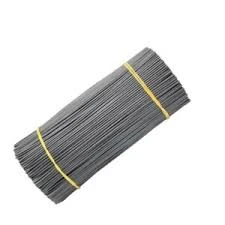Different Varieties of Iron Nails and Their Uses in Construction Projects
Types of Iron Nails
Iron nails have been a fundamental part of construction and woodworking for centuries, serving as crucial components in the assembly of wooden structures and other materials. Despite the advent of modern adhesives and construction techniques, nails remain indispensable due to their strength, reliability, and ease of use. Understanding the different types of iron nails can help professionals and DIY enthusiasts select the right fasteners for their specific projects.
Common Types of Iron Nails
1. Common Nails Common nails are the most widely used type of iron nails. Known for their large heads and thick shanks, they are primarily employed in framing, roofing, and other heavy-duty applications. They are designed to hold materials together securely and resist bending. Common nails are available in various lengths, helping users choose the right size for their projects.
2. Finishing Nails Finishing nails are characterized by their smaller heads and thinner shanks compared to common nails. These nails are primarily used for trim work, molding, and cabinetry. The low-profile heads of finishing nails allow them to be driven into the wood and concealed, providing a clean and polished appearance. They are often used in applications where aesthetic appeal is vital.
3. Box Nails Box nails are similar to common nails but have a thinner shank. This design reduces the chances of splitting the wood during installation, making them ideal for delicate projects or when working with softer woods. Box nails are commonly used in box-construction furniture and sheathing applications.
4. Roofing Nails Specifically designed for roofing applications, roofing nails feature a larger head and a sharp, elongated shaft. The large head ensures that roofing materials, such as shingles, are held securely and prevents penetration through the roof surface. Many roofing nails are also galvanized to resist corrosion from moisture and environmental factors.
types of iron nails

5. Decking Nails Decking nails are used primarily for building decks and outdoor structures. These nails are typically longer and thicker, providing strong holding power to withstand the forces of nature. Many decking nails are also coated with protective materials to resist rust and corrosion, ensuring longevity in outdoor environments.
6. Brad Nails Brad nails are very thin, with a small head, and perfect for precision work. These nails are often used with brad nailers for fastening thin trim, craft projects, or delicate woodworking. The small size makes them easy to conceal and ideal for achieving a seamless finish.
7. Concrete Nails Concrete nails are designed to fasten wood or other materials to concrete surfaces. Made from hardened steel, these nails can withstand the rigors of being driven into tough surfaces. When using concrete nails, a hammer or a nail gun fitted for concrete nails is often required to ensure proper installation.
Specialty Nails
Beyond the common types, specialty nails may be used for specific applications. For instance, spiral-shank nails feature twisted shanks that provide superior holding power in wood, while siding nails are designed specifically for attaching siding materials. Additionally, there are coated nails that provide extra protection against rust and corrosion in outdoor environments.
Conclusion
Selecting the appropriate type of iron nail is crucial for any construction or woodworking project. Understanding the specific characteristics and applications of each type allows for enhanced durability and aesthetics in the finished product. Whether working on a large construction project or a small home improvement task, the right iron nails will ensure strong and lasting results. By investing time in learning about different types and their uses, craftsmen can elevate their work quality and achieve professional results.
-
Space-Saving Chain Fence Hacks Vertical Gardening with Cyclone MeshNewsJul.16,2025
-
Innovations in Iron Nail Wire Production for Modern ConstructionNewsJul.16,2025
-
Creative Uses of Wire Netting Fence in Modern Landscape DesignNewsJul.16,2025
-
Barbed Wire Fence Innovations in Anti-Climb TechnologyNewsJul.16,2025
-
Architectural Uses of Umbrella Nails for Aesthetic Roof DesignsNewsJul.16,2025
-
Architectural Uses of Razor Barbed Wire in Secure Urban DesignNewsJul.16,2025




